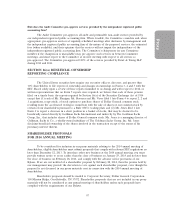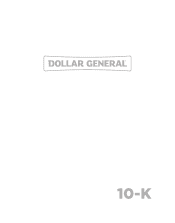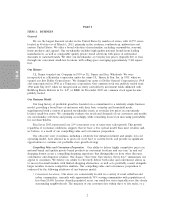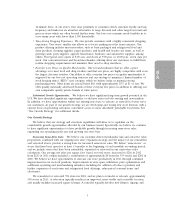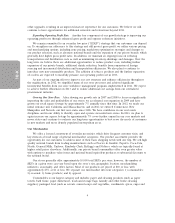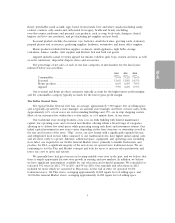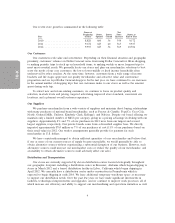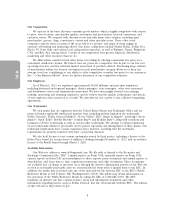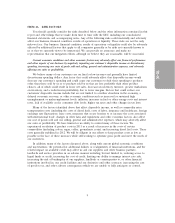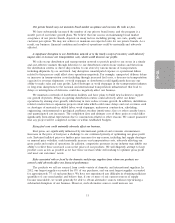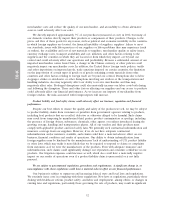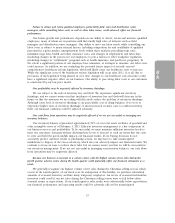Dollar General 2012 Annual Report Download - page 84
Download and view the complete annual report
Please find page 84 of the 2012 Dollar General annual report below. You can navigate through the pages in the report by either clicking on the pages listed below, or by using the keyword search tool below to find specific information within the annual report.
10-K
flour); perishables (such as milk, eggs, bread, frozen meals, beer and wine); snacks (including candy,
cookies, crackers, salty snacks and carbonated beverages); health and beauty (including
over-the-counter medicines and personal care products, such as soap, body wash, shampoo, dental
hygiene and foot care products); and pet (including pet supplies and pet food).
Seasonal products include decorations, toys, batteries, small electronics, greeting cards, stationery,
prepaid phones and accessories, gardening supplies, hardware, automotive and home office supplies.
Home products includes kitchen supplies, cookware, small appliances, light bulbs, storage
containers, frames, candles, craft supplies and kitchen, bed and bath soft goods.
Apparel includes casual everyday apparel for infants, toddlers, girls, boys, women and men, as well
as socks, underwear, disposable diapers, shoes and accessories.
The percentage of net sales of each of our four categories of merchandise for the fiscal years
indicated below was as follows:
2012 2011 2010
Consumables ..................................... 73.9% 73.2% 71.6%
Seasonal ........................................ 13.6% 13.8% 14.5%
Home products ................................... 6.6% 6.8% 7.0%
Apparel ........................................ 5.9% 6.2% 6.9%
Our seasonal and home products categories typically account for the highest gross profit margins,
and the consumables category typically accounts for the lowest gross profit margin.
The Dollar General Store
The typical Dollar General store has, on average, approximately 7,300 square feet of selling space
and is typically operated by a store manager, an assistant store manager and three or more sales clerks.
Approximately 63% of our stores are in freestanding buildings and 37% are in strip shopping centers.
Most of our customers live within three to five miles, or a 10 minute drive, of our stores.
Our traditional store strategy features a low cost, no frills building with limited maintenance
capital, low operating costs, and a focused merchandise offering within a broad range of categories,
allowing us to deliver low retail prices while generating strong cash flows and investment returns. Our
initial capital investment in new stores varies depending on the lease structure or ownership as well as
the size and location of the store. ‘‘Plus’’ stores, our new format with a significantly expanded frozen
and refrigerated food section when compared to our traditional stores, have higher initial capital costs
and are more costly to operate. Likewise, additional space, equipment, and operating costs, including
store labor, are required in our Dollar General Market stores, primarily to handle fresh meats and
produce. In 2012, a significant majority of the new stores we opened were traditional stores. We are
continuing to test the Plus and Market concepts and look for areas to increase sales productivity and
lower our costs to open and operate.
We generally have had good success in locating suitable store sites in the past, and we believe that
there is ample opportunity for new store growth in existing and new markets. In addition, we believe
we have significant opportunities available for our relocation and remodel programs. We remodeled or
relocated 592 stores in 2012, 575 in 2011 and 504 in 2010. Our remodels and relocations in 2012
included 82 stores which we converted to Plus stores. At the end of 2012, we operated 10,272
traditional stores, 124 Plus stores, averaging approximately 10,000 square feet of selling space, and
110 Dollar General Market stores, averaging approximately 16,000 square feet of selling space.
5


